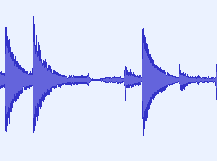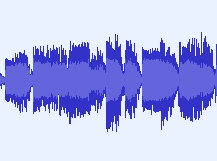The dynamic range of audio, simply put, refers to the difference of volume between the loudest and softest parts of the audio.
Dynamics in music refers to the variance over volume and the offset of timing when playing a piece.
A dynamic piece is said to be fluid and emotionally more powerful, as opposed to robotic and boring.
It is worth noting, at this point, that on acoustic instruments, the difference between a soft sound and a loud sound is more than just volume. The characteristics of the sound are also different.
If a piano player records themselves playing a soft note on their instrument, and also the same note on their instrument loudly, they may increase the volume of the former till it is the same as that of the latter. They will still find they sound different. This is because acoustic instruments by virtue of their physical nature react differently to different applications of force.
Dynamic range of audio (technical term) and dynamics of sound/music (property of instruments and pieces) are mildly different ideas. The latter includes, by extension, the above mentioned characteristic of playing volume affecting sound characteristics.
A track with variable volume over the entire track can sound uneven, imbalanced, and even jarring. However, a track with controlled dynamics such that there is a high dynamic range but the apparent volume doesn't change too much can sound much more even.
One would recommend using automation on a larger scale first to even out volume over time, especially when recording. In the event one is moving away from the microphone, the volume at that point will have to be increased to make up for it, for instance.
But this refers to the overall track sounding balanced in terms of volume.
Dynamic range and dynamic range tools are more often used in context of the audio itself over a span of a shorter time.




The idea of high dynamics is suited to acoustic instruments on classical music, where the dynamics of the piece and instrument are vital to the playing. Playing each note at the same volume or in the same fashion would sound robotic. In this case, where actual volume and apparent volume are two different ideas even on the same instrument, dynamics include the latter more specifically, and the former only by extension.
In the event an actual instrument is being recorded, soft notes will still give the impression of being softly played as you increase the volume to make them better audible. Use your ears too.